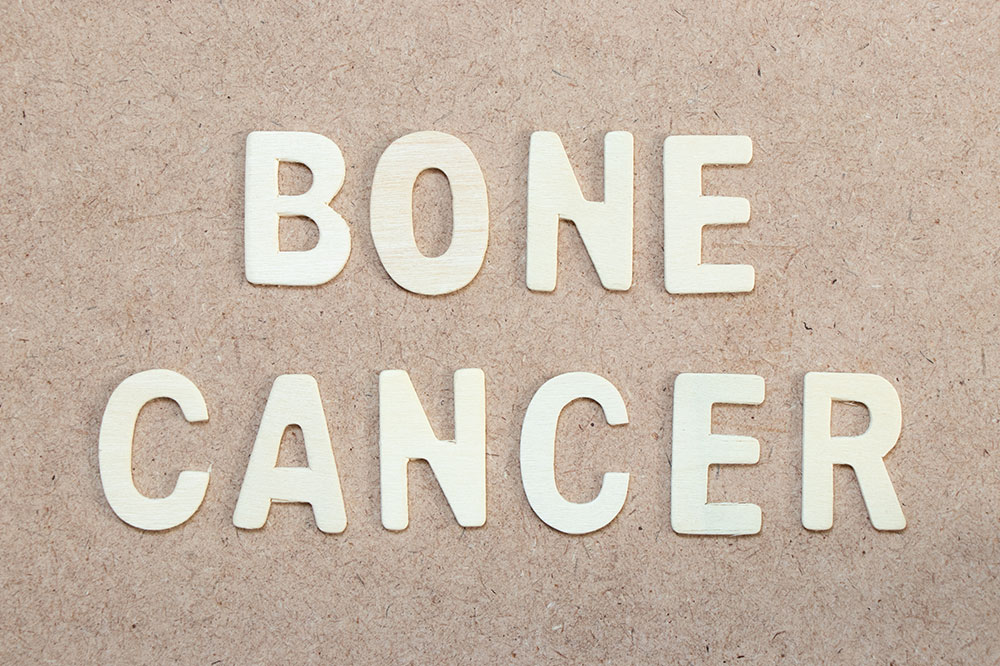Common types of bone cancer and their symptoms

Bone cancer is one of the rarest forms of cancer. It is estimated that this type of cancer accounts for 1% of the total cases diagnosed. Although it is generally observed among children, teens, and young adults, it can develop at any age. Bone cancer can be categorized into four main groups depending on where it starts. Here are the common types and the early signs and symptoms of bone cancer.
Osteosarcoma
Also known as osteogenic sarcoma, this form of bone cancer is observed mostly among children and teens. But in rare cases, osteosarcoma can also occur in adulthood. It starts in the cells where new bone tissue begins to form. As a result, it directly has an effect on the hard tissues that are present around the outer layers of the bones. Furthermore, there might be rare cases when this form of bone cancer also affects the soft tissues that are present outside the bone. Thus, the cancerous cells can start to grow in any bone. But in most cases, it starts towards the end of large bones such as the legs or arms. Sometimes, osteosarcoma can also begin in other body parts, such as the shoulders and hips.
Early signs and symptoms of osteosarcoma
- Pain in the bones
One of the most common early signs of this type of bone cancer is experiencing pain where the tumor has started to grow in the bone. Some of the common areas of the body where the pain begins are near the upper arm and around the joints of the knees. In some cases, the pain can start in other bones too. In the initial stages, the pain can be infrequent. It will come and go with aggravating painful episodes during nighttime. The pain may become intense as a physical activity involving the bone increases. This may also affect mobility, such as a limp may develop if the tumor begins in the bones of one of the legs. - Swollen bones
Another early warning sign is swelling in the bones. This symptom is usually experienced once the pain becomes intense. Depending on where the cancerous cells have started growing, a lump or mass may be observed or felt in the area where the swelling has occurred. - Brittle bones
As osteosarcoma makes the bones weak around the spots where the tumors develop, fractures can occur in these areas. The limb where the tumor has started to grow will feel sore for some period. Then the intensity of pain will increase, and finally, a fracture may occur.
Ewing sarcoma
Ewing sarcoma was named after James Ewing, MD, who first described this cancer in 1921. He observed that the cells of this cancer under the microscope appeared different from the cells of other types of bone cancer. Thus, Ewing sarcoma came to include different types of tumors that start from the same type of cells and, as a result, have the same characteristics
In most cases, Ewing sarcoma starts in the bones and the soft tissues surrounding the bones. The common sites for tumor growth include the areas in and around the shoulder blades, ribs, and hips. In some cases, the cancerous cells may even begin in the long bones, such as those in the arms and legs. In rare cases, it can also start in the bones of the pelvic area. Sometimes, tumors of Ewing sarcoma grow in the soft tissues of the abdomen and the chest.
Early signs and symptoms of Ewing sarcoma
- Pain
In most cases of Ewing sarcoma, pain is often the most commonly experienced symptom. The pain starts from the area where the tumor has started to grow. In the beginning, the pain is quite mild and not continuous. It might become intense during nighttime or while doing any physical activity involving the affected bones. Over time, the pain becomes persistent and intensifies. The pain starts to radiate to the surrounding areas. It begins to affect the range of motion of the limb where the tumor has grown. - Lump
Another early sign of bone cancer of the Ewing sarcoma type is the development of lumps. It is noticeable as a swelling in the affected area. The swollen area will feel warm and soft. The swelling or lump is usually observed in the case of Ewing sarcoma occurring in the legs and the arms. But when this type of bone cancer develops in the pelvic area or the chest, the lump or swelling is observed when the tumors have grown too large and the cancer is in the advanced stage.
Other early signs of bone cancer
Ewing sarcoma can also cause other symptoms in certain cases. These include the following:
- Fever
- Fatigue
- Loss of appetite
- Back pain
- Numbness
- Paralysis in legs or arms
- Shortness of breath
Chondrosarcoma
Chondrosarcoma is a type of bone cancer that starts in the tissues known as cartilage. These are soft connective tissues that help in the smooth movement between joints and bones. Some of the cartilage becomes bones due to calcium deposits over time. Due to several factors, particularly genetics, cancerous cells may begin to grow in these cartilages leading to chondrosarcoma. This generally happens in the bones of the pelvic area, the arms, and the legs. Unlike the other types of bone cancer, chondrosarcoma is generally observed in adults rather than in children or adolescents.
Early signs and symptoms of chondrosarcoma
Chondrosarcoma doesn’t show too many early signs. As the tumor grows slowly, the symptoms start showing only in the later stages. Some of the common signs and symptoms include the following.
- Pain that intensifies over time
- Swollen bones
- A lump that grows over time
- Fatigue
- Weakness
- Bladder and bowel control problems
Chordoma
This is the rarest type of bone cancer. It starts in the spine; typically, the tumor grows at the base of the skull or in the bones of the spine. Similar to chondrosarcoma, chordoma is generally observed among older adults rather than young persons.
Early signs of bone cancer of type chordoma
Most of the symptoms arise due to disruption in the normal functioning of the spine as the tumor grows steadily over time. Here are a few common symptoms:
- Tingling
- Numbness
- Weakness
- Lack of bladder or bowel control
- Sexual dysfunction
- Vision problems
- Endocrine problems
- Swallowing difficulties







